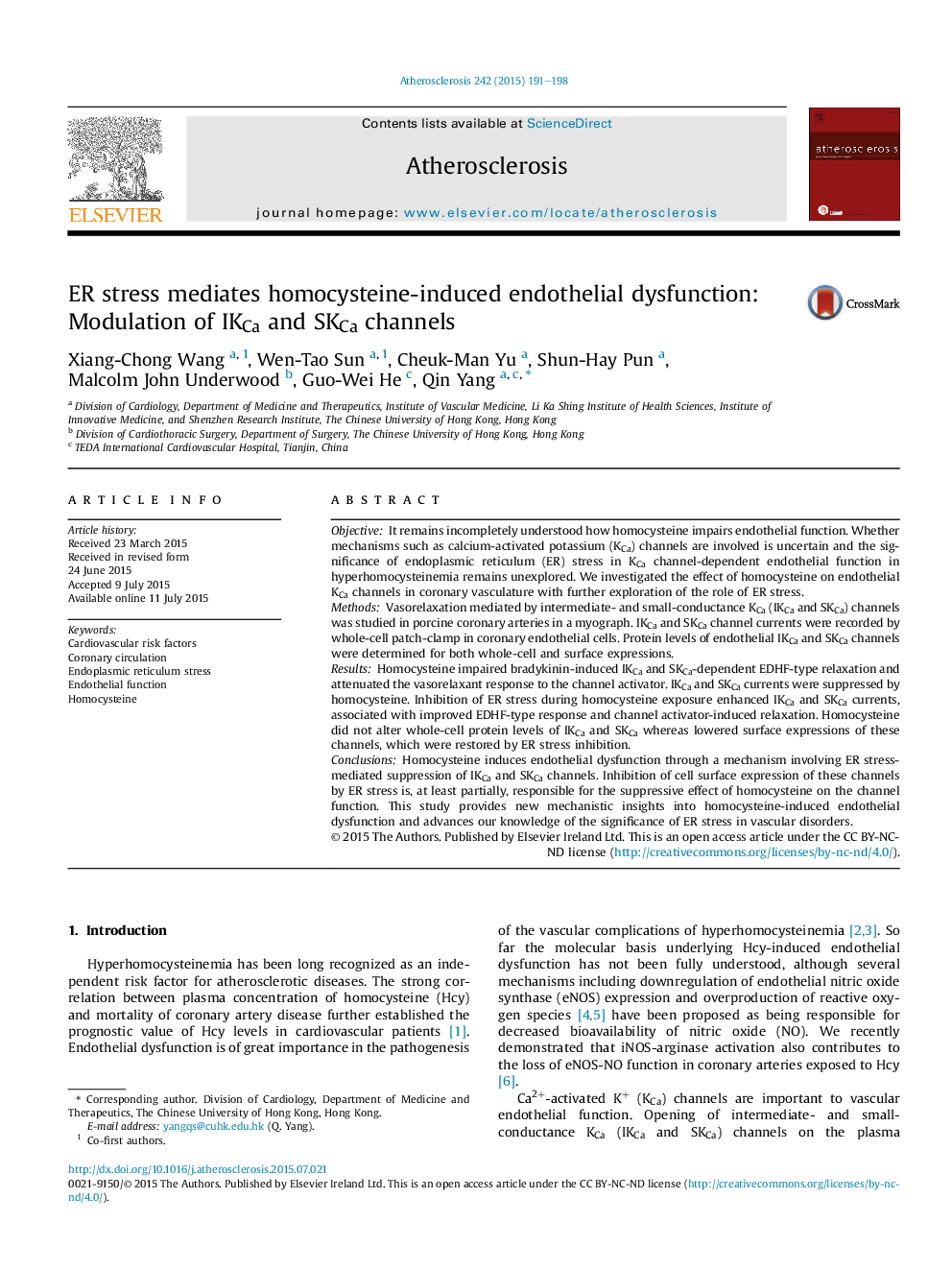| Article ID | Journal | Published Year | Pages | File Type |
|---|---|---|---|---|
| 5944002 | Atherosclerosis | 2015 | 8 Pages |
â¢Homocysteine inhibits endothelial IKCa and SKCa channel function.â¢ER stress mediates homocysteine-induced IKCa and SKCa channel inhibition.â¢ER stress suppresses cell surface expression of IKCa and SKCa channels.
ObjectiveIt remains incompletely understood how homocysteine impairs endothelial function. Whether mechanisms such as calcium-activated potassium (KCa) channels are involved is uncertain and the significance of endoplasmic reticulum (ER) stress in KCa channel-dependent endothelial function in hyperhomocysteinemia remains unexplored. We investigated the effect of homocysteine on endothelial KCa channels in coronary vasculature with further exploration of the role of ER stress.MethodsVasorelaxation mediated by intermediate- and small-conductance KCa (IKCa and SKCa) channels was studied in porcine coronary arteries in a myograph. IKCa and SKCa channel currents were recorded by whole-cell patch-clamp in coronary endothelial cells. Protein levels of endothelial IKCa and SKCa channels were determined for both whole-cell and surface expressions.ResultsHomocysteine impaired bradykinin-induced IKCa and SKCa-dependent EDHF-type relaxation and attenuated the vasorelaxant response to the channel activator. IKCa and SKCa currents were suppressed by homocysteine. Inhibition of ER stress during homocysteine exposure enhanced IKCa and SKCa currents, associated with improved EDHF-type response and channel activator-induced relaxation. Homocysteine did not alter whole-cell protein levels of IKCa and SKCa whereas lowered surface expressions of these channels, which were restored by ER stress inhibition.ConclusionsHomocysteine induces endothelial dysfunction through a mechanism involving ER stress-mediated suppression of IKCa and SKCa channels. Inhibition of cell surface expression of these channels by ER stress is, at least partially, responsible for the suppressive effect of homocysteine on the channel function. This study provides new mechanistic insights into homocysteine-induced endothelial dysfunction and advances our knowledge of the significance of ER stress in vascular disorders.
Graphical abstractDownload high-res image (62KB)Download full-size image
